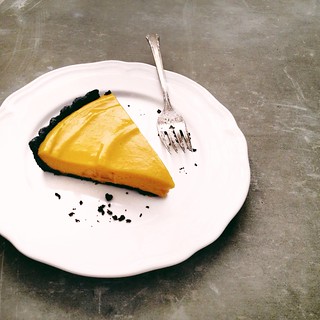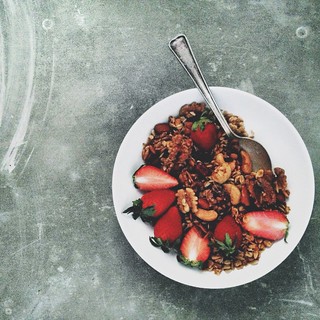Monday, March 14, 2005
One for Kudo: Homemade Kaya Recipe
As promised to this guy, this is what I got from my dad over the weekend. I have only ever attempted to make it myself once, as kaya making proved to be a very tiring and heaty process.
If you don’t have a double boiler, a make shift one can always be constructed with a smaller pot as the water boiler and a slightly bigger one to sit on top. The top pot must be lidded. The double boiler is best made of steel as it is a better conductor and will reduce the risk of burning your efforts. Other utensils required are a huge, preferably aluminum mixing bowl, a wooden mixing spoon and a heavy metal whisk.
A Chinese bamboo foldable fan is optional.
Homemade KayaA few tips from PY:
Makes enough to last you for weeksFilter the coconut milk to remove impurities or shredded coconut bits. In the mixing bowl, whisk all the eggs slightly to break up the yolks. Add sugar by batches and whisk to dissolve. After the sugar has dissolved completely, add the coconut milk and whisk with all the strength you can muster till the mixture is smooth and well–combined.
- unadulterated coconut milk from 2 coconuts
- 500g castor sugar
- 6 to 7 eggs (use only B– or C–grade eggs)
- 3 pieces pandan (screw pine) leaves, knotted
Bring the water in your double boiler to boil. Slow down the fire till the water bubbles continuously, but no longer boiling. Place the top pot firmly and pour in the mixture. Include the knotted pandan leaves.
Now comes the interesting part. Come hell or high water, you have to continue stirring. Make sure to stir all the way to the bottom and sides of your pot. Yes, you’ll begin sweating and probably swearing, but keep stirring and don’t stop till the kaya slowly turns thick in texture and finally sets into the consistency of what you actually spread on your roti bakar. You will notice the color slowly turning golden brown or green, depending on the quality and age of the pandan leaves.
After this point, the time required to cook the kaya depends on how long you wish to store it. For maximum storage period of up to 4 weeks, cover the top pot and continue to cook the kaya over low flame (water no longer need to bubble) for 4 hours. This is the best approach. If you take the shortcut and cook it for say, only 1—2 hours, by the second week of storage, the kaya you retrieve from the fridge will slowly produce water after it reaches room temperature and is therefore screwed.
Next, leave it to cool and refrain from licking more than what’s left on the mixing spoon. Store in plastic or glass containers and refrigerate accordingly.
1. As in all dessert, pastries and cake making processes, to get the best final result, always keep your beating and stirring in one direction only.
2. The success rate of a homemade attempts is higher when freshly squeezed coconut extract is used rather than packed ones.
Happy kaya making!
Life Is Great explores the incredible world of food and cooking. We hope to share with you our most delicious moments and inspirations.
“Just like becoming an expert in wine–you learn by drinking it, the best you can afford–you learn about great food by finding the best there is, whether simply or luxurious. The you savor it, analyze it, and discuss it with your companions, and you compare it with other experiences.”
Julia Child (Mastering the Art of French Cooking)
“Life is short. Live your dream and share your passion.”
- Gooey Cinnamon Cake
- Chinese Crispy Roast Pork Belly (Siu Yuk 烧肉)
- ABC Soup (罗宋汤)
- Kong Bak Pau (扣肉包)
- Pandan Chiffon Cake (Improved)
- Crispy Fried Egg
- Tamago Kake Gohan (卵かけご飯)
- Strawberry Pie
- One Pot Chicken Rice
- Bak Chor Mee (肉脞面 - Minced Pork Noodle)
- Hakka Salted Egg Steamed Pork (咸蛋蒸猪肉)
- Hong Kong Part III
- Hong Kong Part II: Zongzi/Bakchang (粽子/肉粽)
- Caffè HABITŪ (the table) at G.O.D. Causeway Bay, Hong Kong
- Hong Kong Part I
- Australia 2010 Part 1: Melbourne
- Bourke Street Bakery, Sydney
- Il Fornaio, St Kilda
- Queen Victoria Market, Melbourne




0 Comments on One for Kudo: Homemade Kaya Recipe
Post a Comment